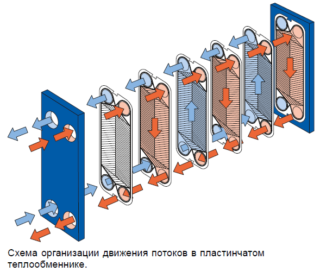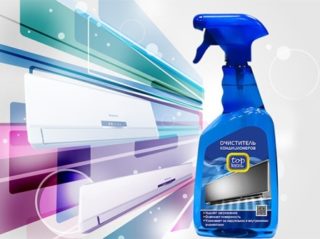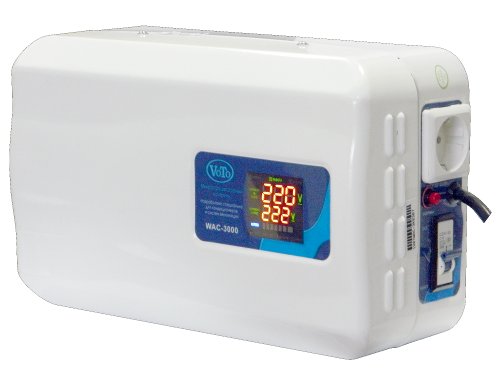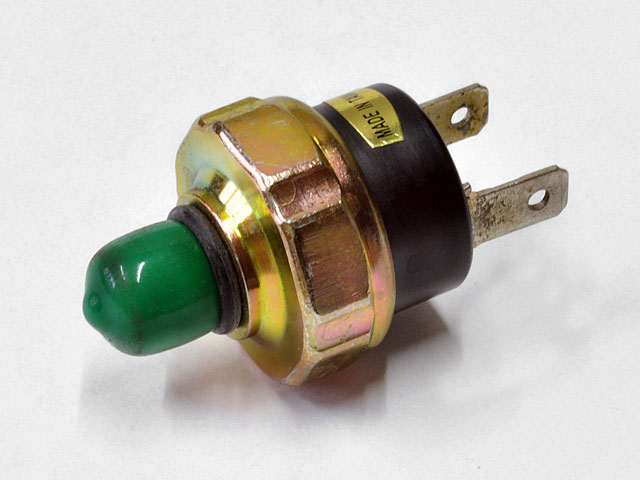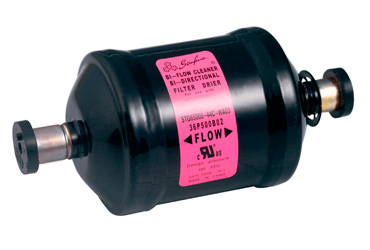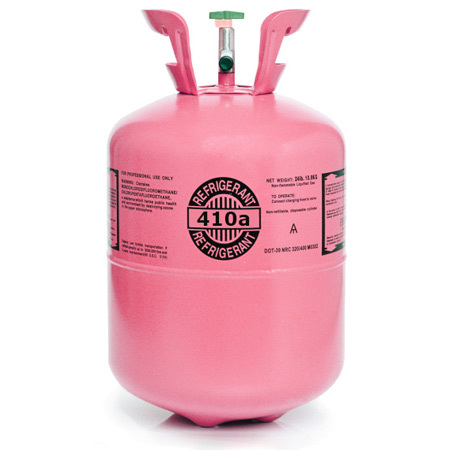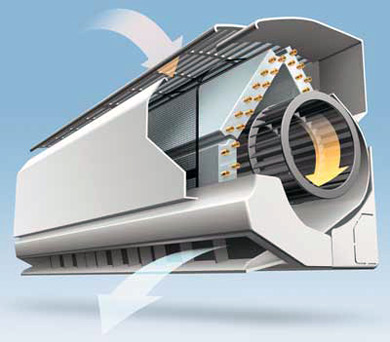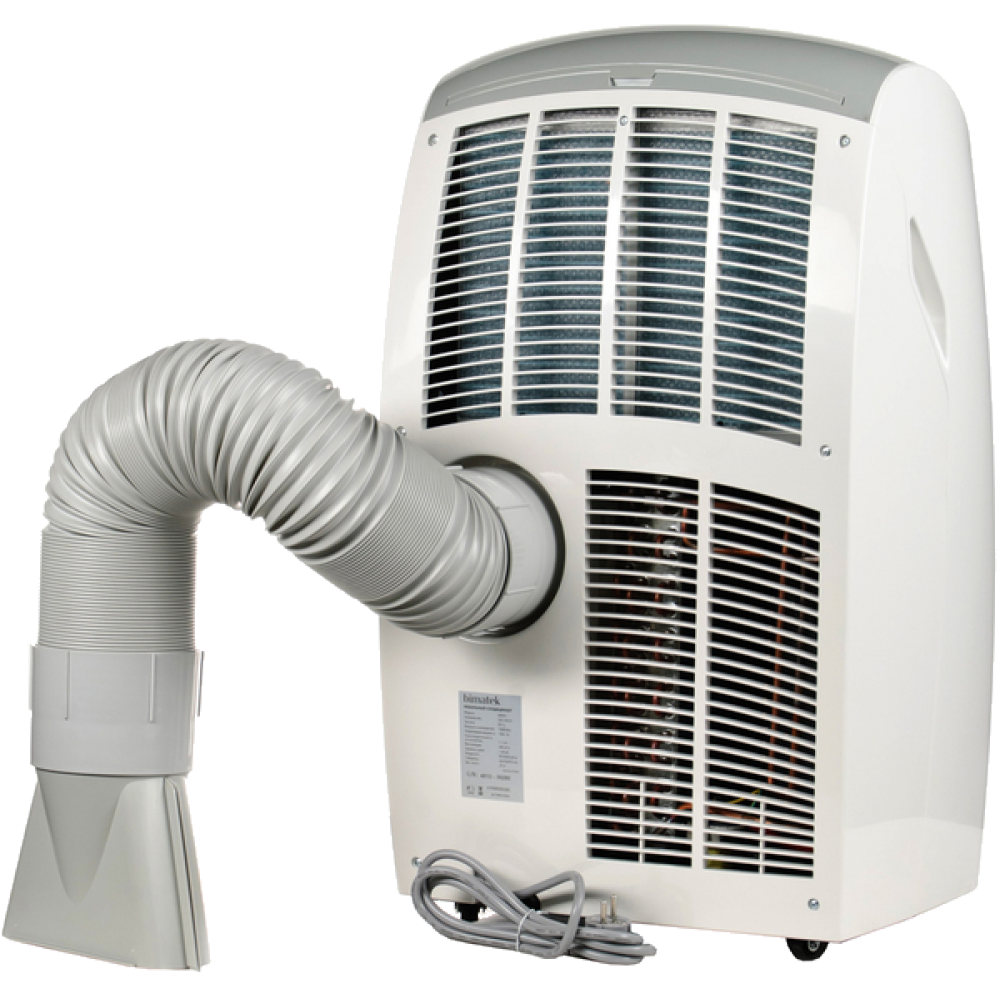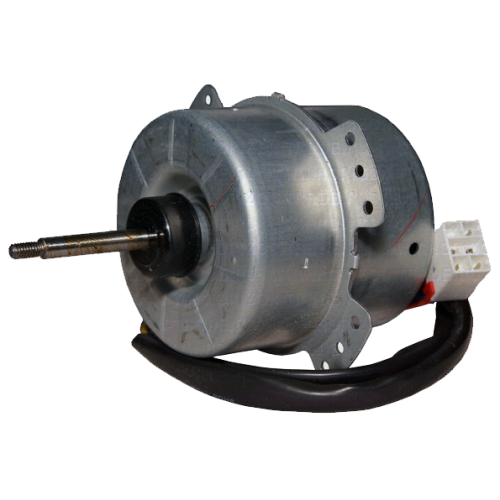The evaporator assists the refrigerant in extracting heat from the air as it evaporates inside the circuit. In a monoblock, it is located next to the condenser, and in a split system in the indoor unit.
Operating principle
The main function of the evaporator is to cool the air flow through the fan. The evaporator is an indispensable part of the closed freon circle.
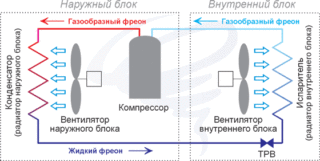
Air cooling and heating system composition:
- refrigerant;
- evaporator;
- fans of indoor and outdoor units;
- refrigerant copper piping;
- capacitor;
- compressor;
- compressor oil;
- thermostatic valve.
Freon, initially in a gaseous state, is compressed in the compressor and turns into a liquid. Freon gives off its heat to the air that enters the device due to the operation of the fan.
The liquid enters the thermostatic expansion valve, after dropping part of the temperature. The refrigerant, having received a reduced pressure inside the spiral device, cools even more.
Once in the evaporator, freon returns to a gaseous state when interacting with room air, cooling the space of the room. The circulation takes place due to the operation of the fan.
Types of heat exchangers and their design
Evaporative heat exchangers are divided into 2 types.
Plate heat exchanger subtypes:
- multi-circuit - has two separate contours on one side of the plate;
- one-way - the movement of the cooling medium only downward, and the evaporating freon - upward;
- multi-way - the direction of movement can be changed several times
Second type: shell and tube heat exchangers. The metal pipes installed in the casing are placed in the form of a spiral tape or bundles fixed inside the nozzles, chamber, covers, casing. Copper is the most commonly used material.
Shell and tube heat exchangers are divided into several types:
| Refrigerant | Ammonia | Freon | — |
| By arrangement of pipes | Vertical | Horizontal | — |
| By pipe structure | Ribbed | Smooth | — |
| By the number of pipe rows | Single row | Double row | Beam |
Evaporator malfunctions
The most common problem is air cooling stops. In most cases, this is due to the accumulation of dust and dirt, as they prevent air from reaching the heat exchange surface.
Contamination is also dangerous for other parts of the cooling system - during prolonged operation under inappropriate conditions, the compressor often burns out.
The evaporator of the air conditioner can be covered with a layer of ice, and then the melting water, overflowing the drainage tank, will pour into the room. This situation occurs due to the depressurization of the circuit and the leakage of freon. In case of such a serious breakdown, it is recommended to contact the service center.
The air conditioner and the evaporator in particular may malfunction due to improper installation of the system. Therefore, if there is no personal experience in the repair and installation of air conditioners, you should not get down to business on your own. You need to entrust the work to professionals.
A fan that starts to fail and works too weakly also affects the performance of the entire heat exchange system.
Equipment cleaning
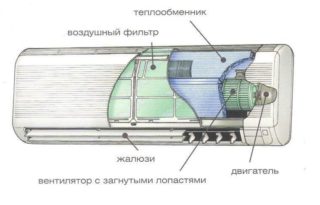
The air conditioner is cleaned at least 2 times a year - in spring and autumn. Animal hair and excessively dirty or humid air, which is conducive to mold and mildew, will more quickly render the device critical. If these factors are present, cleaning is carried out at least once every 3 months.
Strong blockage alarms:
- the cooling properties have deteriorated;
- the power of the air conditioner has decreased, and the energy consumption has increased;
- an unpleasant smell appears when the device is turned on.
For the cleaning procedure, you can call a professional or get down to business yourself - the process is not too complicated.
Cleaning scheme
Cleaning products are available in the form of foam or aerosol. They have disinfecting properties, contain biologically active components, alkaline additives and acids. They should be used according to the instructions on the package.
Chlorhexidine will help save on special cleaning products. It effectively copes with dirt, fungi and bacteria, and its price is an order of magnitude lower. Used in medicine as an antiseptic solution. You can buy it at any pharmacy.
Self-cleaning of the heat exchanger includes several stages.
Disconnect the device from the power supply. For greater safety, disconnect the power supply to the apartment during the operation.
Open the bezel and remove the air filters. Rinse the coarse filter under warm running water and lay it down to dry. Hot water and forced hot air drying should not be used, as the filter mesh may be deformed.
Depending on the model of the air conditioner, the evaporator is located under the filters or under the cover. Clean carefully to avoid damage to the device. We recommend using a vacuum cleaner with a narrow hose attachment.
Carefully wipe off any residual detergent from the body and pipes. The heat exchanger cannot be wiped clean - there is a high probability of accidentally deforming the lamellas. The remedy will gradually drain naturally by itself.
Reinstall all removed parts. The filter can be inserted when it is completely dry. Reconnect the power supply and turn on the air conditioner.
If the device is too dirty due to lack of maintenance for a long time, you should contact the service. In a critical condition, conventional cleaning products may not be up to the task. Professionals most often use a steam generator to combat stubborn dirt.
Service prices
Service for the repair and maintenance of air conditioners takes a lot of money for their work. For orientation in this matter, we analyzed the average prices in Moscow for several services:
| Type of service | Minimum price (in rubles) |
| Cleaning the drainage system | 500 |
| Dry cleaning the condenser of the outdoor unit | 1300 |
| Cleaning the fan blades of the indoor unit | 1400 |
| Cleaning the evaporator of the indoor unit with an antibacterial compound | 1500 |
| Cleaning the condenser of the outdoor unit with a washing machine | 3000 |
The evaporator is an important part in the operation of the air conditioner, so timely maintenance will allow it to function for many years without breakdowns.

